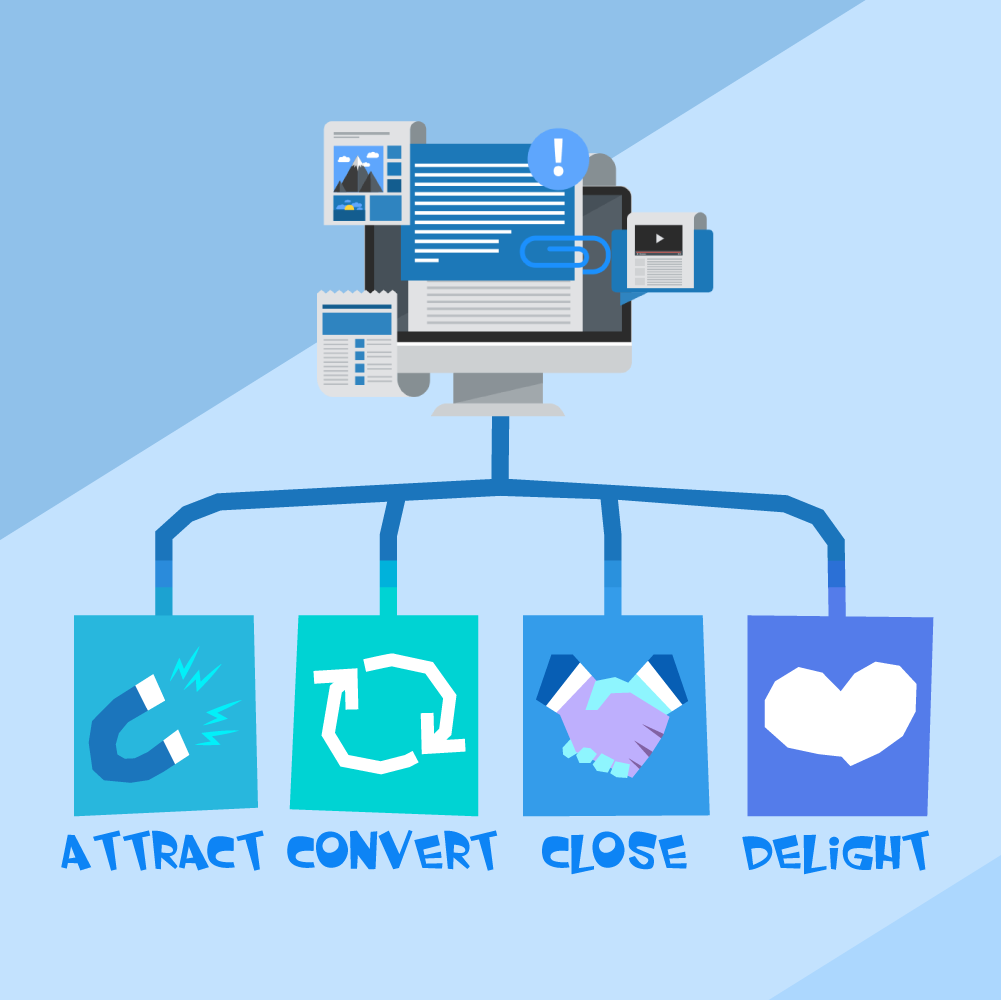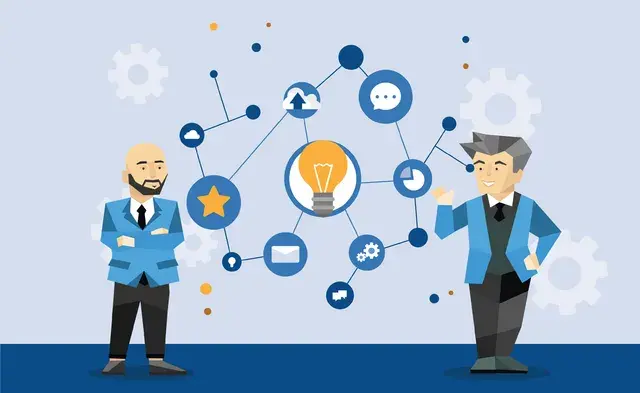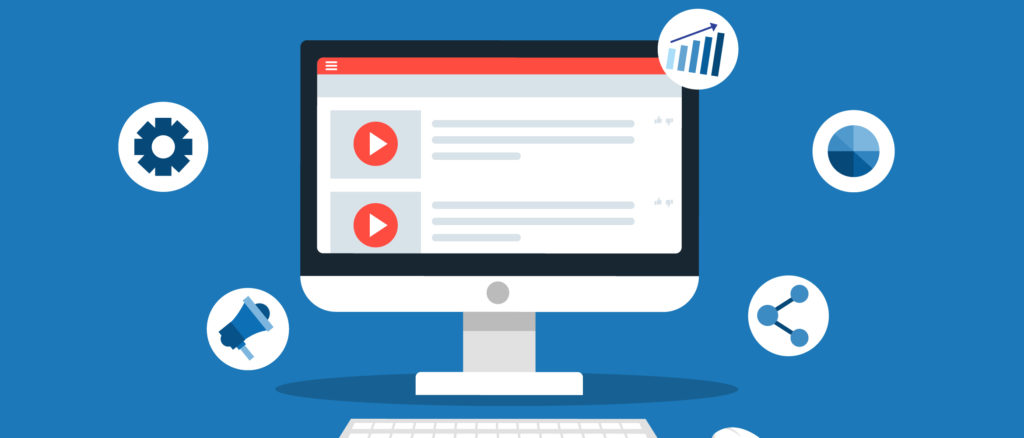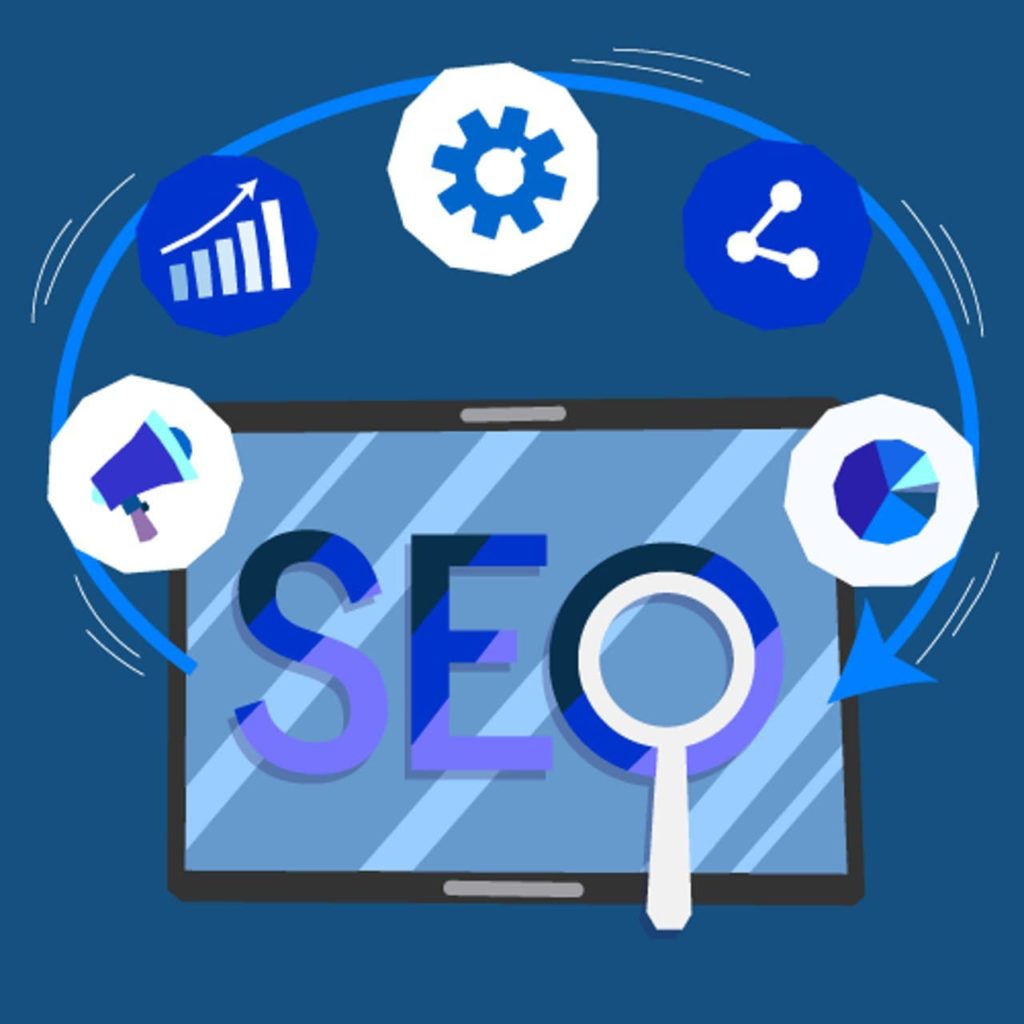
On-Page SEO and the Inbound Methodology
The Inbound Methodology is a breath of fresh air in a crowded and complicated space. It can provide our marketing strategies with much needed direction but it also leaves some room for interpretation.
Breaking down your efforts to fit within the Inbound Methodology stages of Attract, Convert, Close and Delight is a tried and tested method of making sure that you are focusing on each stage where it is needed and as it is needed.
When you look at charts and images that outline the Inbound Methodology you will notice that SEO is placed firmly in the top of the chart within the Attract stage.
It seems logical that on-page SEO initiatives would be located in the Attract stage of the Inbound Methodology when the primary goal of this stage is to execute on marketing initiatives to attract new visitors to your website.
Isolating SEO to only the Attract stage is a rather one-dimensional perspective, of what on-page SEO actually entails. If you continuously optimize your website’s on-page SEO then you will actually be enhancing your marketing and sales efforts across the entire spectrum of the customer journey, not simply the first stage.
On-Page SEO Assisting in the Attract Stage
The world of SEO is a constantly changing roller coaster of a ride. Search engines have changed a lot over the years and moved well beyond simply needing an exact match keyword placed within a few strategic places on a website page. As it stands today, using a primary keyword over and over, on any given page, will have no positive benefit for you what so ever.
It goes without saying that a well optimized website, that has been built with both the Google algorithm and humans in mind, will most certainly succeed in bringing new visitors to your website.
On-Page SEO Assisting in the Convert Stage
Many of the same tactics that you will implement to increase conversions on your website are actually useful in improving your on-page SEO. In many ways, you cannot design your site for conversions in mind without also designing it in a way that helps its ranking within a SERP.
Landing pages should be designed in a way where the URL and the Title Tags are extremely close, if not identical, and the description used on the landing page to convince website visitors to exchange their information for your offer are contextually valuable from an SEO standpoint.
By creating a great landing page visitors are less likely to ‘bounce’ or leave this page and subsequently signal to Google that this page is valuable and should be regarded as such.
Optimizing for Dwell Time
Suffice to say that when a user lands on your site and then immediately decides that it is a poor fit for their needs, and then leaves, this is not going to assist with your conversion rate. What many webmasters do not realize, however, is that Google is also paying attention to whether people are fleeing from your pages at an alarming rate.
For example, if a user clicks a result in Google for your site then quickly scans the content and realizes it is not what they are looking for, then they will generally hit the back button and see if some of the other results are in fact more useful than yours. Google uses the elapsed time (or lack of return is even better) as a method of understanding the value of your site and whether it should be positioned higher within the results page.
The same processes that you will go through to try and drive more conversions on your site are the same tasks that you will complete to try and increase your dwell time.
Providing a Clean Experience Free from 404 Errors and Messy Redirects
Humans don’t enjoy clicking on a link only to find a 404 error telling them that the page does not exist, no matter how friendly you make your soft 404 pages appear.
The Google bots also do not appreciate being told that they got lead down the garden path only to have you tell them that the link goes nowhere.
Well Structured Content that Goes Into Depth on a Given Topic
You cannot begin going into depth on a topic without starting to branch out and using all sorts of LSI (Latent Semantic Index) Keywords. Both Google and your users will pick up on some of these more ‘peripheral’ keywords that you are using and interpret this as a sign that you have a deep knowledge and understanding of your subject matter.
The same way that you write engaging and useful content with the intention of having someone decide you can help them is the same way that you write useful content that shows the algorithm that your site will be a great candidate for a good position within a SERP.
On-Page SEO Assisting in the Close Stage
By creating pages on your site that will naturally respond to your prospects questions within the close stage you can further assist them over the line. Examples can be as simple as ‘how long does a contract last with xyz’ or many other questions about your organization in general.
They are either going to be able to find all the information they need from the way your site is structured, or from a search engine. Either way your on-page SEO strategy will be the driving force that helps visitors find the answers they are looking for.
Likewise, if your blog content is well written, and your website’s pages are comprehensive and continue to answer questions that visitors search for in Google, then this will only further add to your chances of closing the deal.
On-Page SEO Assisting in the Delight Stage
Perhaps the best example of on-page SEO being used to aid in ongoing customer satisfaction is the way that HubSpot has optimized their website. Any question you may have regarding their product or platform is well optimized and easily accessible right from a Google search.
I have even had staff members from HubSpot let me know that a simple Google search of my HubSpot related questions will be a quick and efficient way of finding the answers that I need; and they were not wrong.
Going beyond providing valuable information for how to get the most out of your product or service, the delight stage can also include the creation of content (and optimization of those pages) that is specifically geared towards customers who’s purchasing journey has just been completed with your company.
If you know what type of content people are going to need just after they have purchased, then you can have those resources ready to help them even when you are no longer trying to close the deal. This is the true definition of delighting your clients; spending time of your own on content creation to make their life easier, and their experience with your brand an enjoyable one.
Conclusion
On-page SEO is much more than placing some keywords on your website and adjusting a few meta tags. It is about a full-scale management of the human and bot experience that your website provides.
Optimizing your company’s website experience to assist across the full spectrum of the buyer’s journey will be a valuable undertaking, and certainly is not only an activity reserved for the Attract stage of the Inbound Methodology.









